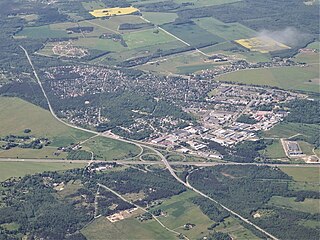
Saue is a town in north-western Estonia. It's the administrative centre of Saue Parish in Harju County.

Vääna is a village in Harku Parish, Harju County in northern Estonia. It has a population of 266. Vääna is located about 20 km (12 mi) from the capital Tallinn.

Kose-Uuemõisa is a small borough in Kose Parish, Harju County, northern Estonia.

Kiiu is a small borough in Kuusalu Parish, Harju County, northern Estonia. It has a population of 859.

Riisipere is a small borough in the Saue Parish, Harju County, Estonia. Prior to the administrative reform of Estonian local governments in March 2017, Riisipere was the administrative center of Nissi Parish. Located on the Ääsmäe-Haapsalu road, its distance from Tallinn is 45 km, from Haapsalu 50 km, Märjamaa 30 km, Rapla 40 km.

Sõmerpalu is a small borough in Võru County, Estonia. Between 1991–2017, until the administrative reform of Estonian local governments, the small town was the administrative center of Sõmerpalu Parish. As of 2017, it belongs to Võru Parish.

Suuremõisa is a village in Hiiumaa Parish, Hiiu County in northwestern Estonia.
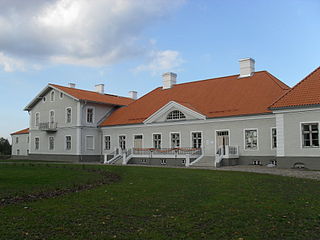
Kukruse is a village in Toila Parish, Ida-Viru County in northeastern Estonia. It is located by the Tallinn–Narva road (E20), between the cities of Kohtla-Järve and Jõhvi. Adjacent to the village is a district of Kohtla-Järve sharing the same name, Kukruse.

Roosna-Alliku is a small borough in Paide municipality, Järva County in northern-central Estonia. Prior to the 2017 administrative reform in Estonia of local governments, it was the administrative centre of Roosna-Alliku Parish.

Muuga is a village in Vinni Parish, Lääne-Viru County, in northeastern Estonia. Between 1992 and 2017 the village was located in Laekvere Parish.
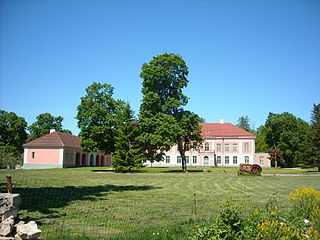
Rägavere is a village in Rakvere Parish, Lääne-Viru County, in northeastern Estonia.
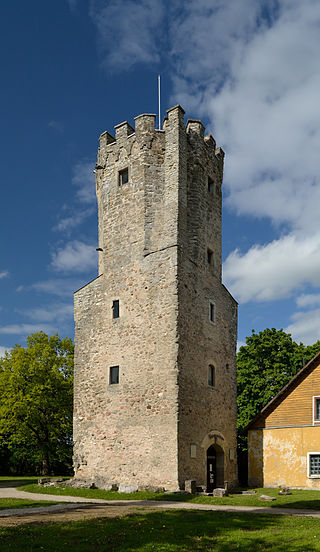
Porkuni is a village in Tapa Parish, Lääne-Viru County, in northern Estonia. The settlement is located around the Lake Porkuni, which is the source of the Valgejõgi River.

Palmse is a village in Haljala Parish, Lääne-Viru County, in northern Estonia, on the territory of Lahemaa National Park.
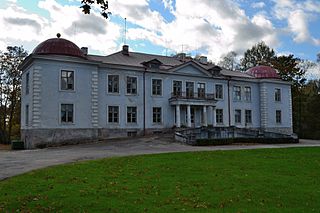
Maidla is a village in Rapla Parish, Rapla County in northwestern Estonia. Between 1991 and 2017 the village was located in Juuru Parish.

Lohu is a village in Kohila Parish, Rapla County, in northwestern Estonia. Lohu railway station, on the Tallinn - Viljandi railway line operated by Elron, in a short distance from the village.

Koluvere Castle, also Koluvere Episcopal Castle,, is a castle in Koluvere, Lääne County, in western Estonia.

Purtse Castle is a castle of a local Purtse knight manor in Purtse, northeastern Estonia. It was built in the middle of the 16th century, probably by the landowner Johann von Taube, at a time when late Gothic ways of building were slowly being abandoned in favour of Renaissance ideas. The building therefore contains partly elements which were archaic even for its time, and partly examples of renaissance architecture.

Holdre is a village in Tõrva Parish, Valga County in Estonia.

Alatskivi Castle is a neo-Gothic castle in Alatskivi, Estonia. Dating to the 17th century, it is situated in Peipsiääre Parish, Tartu County. It was rebuilt in the late 19th century by Baron Arved von Nolcken, modeled on the royal residence of Balmoral in Scotland. A renovation occurred between 2005 and 2011. Five rooms on the first floor house the Eduard Tubin museum, which documents his accomplishments as a music composer and conductor.

Sangaste Castle is a castle in Sangaste, Otepää Parish, Valga County. The castle was built in 1879 to 1881 and designed by architect Otto Pius Hippius. It is built in a neo-Gothic style with influences from Tudor architecture, and considered one of the most impressive examples of Gothic Revival architecture in the Baltic States.



























